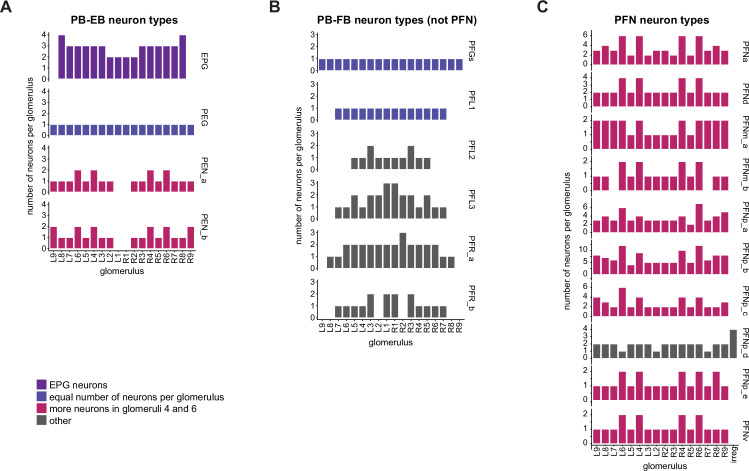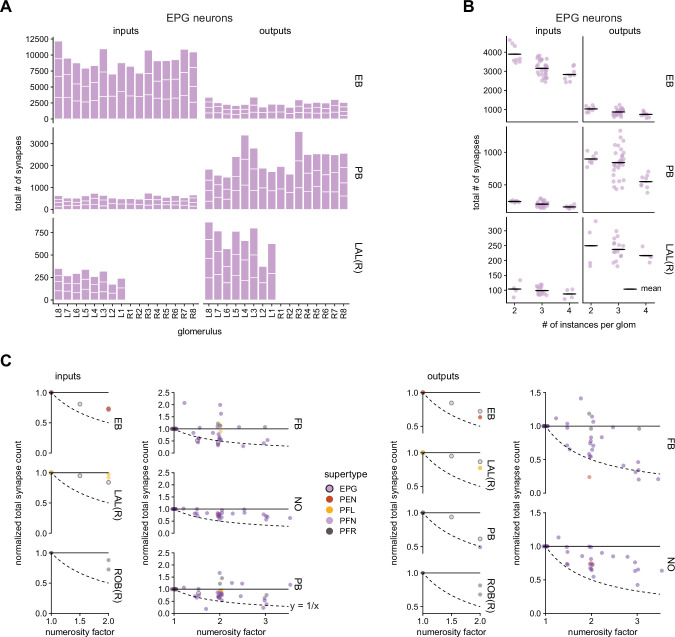Figure 24. The number of neurons per glomerulus varies for each columnar neuron type.
(A) Number of neurons per protocerebral bridge (PB) glomerulus for each of the PB-EB neuron types. (B) As in (A), for the PFGs, PFL, and PFR neurons. (C) As in (A), for the PFN neurons. The irregular PFNp_d neurons have minimal arborizations in the PB.


